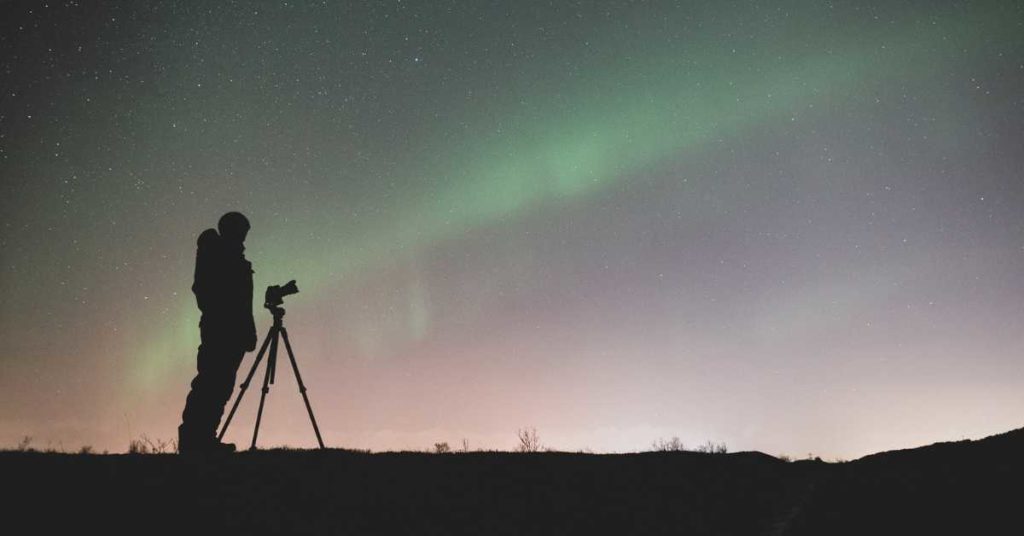Being one of the most interesting and rewarding genres of photography, astrophotography not only requires great skills but also a camera that is a blend of the right specs. You need the best astrophotography camera that has the right sensor, the right shutter speed, and the right ISO and dynamic range. There are several options out there, including mirrorless and DSLRs and cameras that are dedicated to astrophotography. But choosing the right tool would be a little confusing in the journey of astrophotography especially for a newbie. In this post, we have listed the top cameras that are reliable for shooting celestial bodies including the moon, stars, Milky Way, northern and even deep skies objects like faraway galaxies, and star clusters. With these astrophotography cameras, the stars are your limit.
Top 10 Best Astrophotography Cameras In 2024
| 1 | Canon EOS Ra – Specialized Astrophotography Camera |
| 2 | Nikon D810A – Best DSLR For Deep-Sky Photography |
| 3 | Sony A7S III – Best Mirrorless For Low Light Videography |
| 4 | Nikon D5 – NASA’s Favorite |
| 5 | Sony a7R III – Best All-Rounder |
| 6 | Nikon D500 – Best For Travel |
| 7 | Canon EOS 7D Mark II – Best Value For Money |
| 8 | Nikon D5600 – Best For Beginners |
| 9 | Pentax K-70 – Best For Amateur Astrophotographers |
| 10 | Nikon D3400 – Best Budget Astrophotography Camera |
The top choices in astrophotography cameras have been meticulously designed to capture the marvels of the night sky with a remarkable level of precision and clarity. These specialized cameras come with a unique set of features that distinguish them from standard digital cameras. They’re equipped with spacious image sensors, tailored to excel in low-light conditions, enabling them to capture faint celestial objects while keeping unwanted noise at bay. Moreover, they often boast remarkable dynamic range capabilities, which allow them to record both the brilliant and subtle details of the night sky. Many astrophotography cameras offer extended exposure settings, a fundamental requirement for capturing the delicate intricacies of starlight, nebulae, and galaxies. Additional features such as cooling systems to mitigate sensor heat (a crucial factor in minimizing electronic noise) and seamless software integration for stacking and post-processing are also commonly found. While the pricing of the best astrophotography cameras can vary significantly based on the brand, sensor size, and specific features offered, they are widely regarded as a worthwhile investment for dedicated astrophotographers aiming to capture the majesty of the cosmos with exceptional quality.
The Best Astrophotography Camera – Reviews
1. Canon EOS Ra
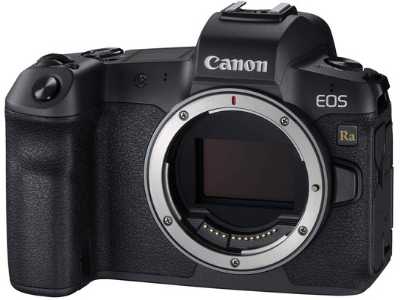
| Type | Mirrorless |
| Sensor | Full-frame |
| Megapixels | 30.3MP CMOS |
| Dynamic range | Approx 15 Evs |
| Shutter speed | 1/8000 sec |
| Lens mount | Canon’s RF-mount |
| Autofocus | 5,655 Dual Pixel AF positions |
| Screen Type | LCD: 3.15-inch fully articulating touchscreen, 2.1m dots |
| Viewfinder | EVF, 3.69m dots, 100% coverage |
| Burst Speed | 8fps |
| ISO range | 100 to 40,000 (exp. 50 to 102,400) |
| Video Resolution | 4K 30fps, 1080p 60fps |
| Weight | 580g/1.46 lb |
| Battery | 430 shots |
| User Level | Enthusiast/Professional |
This Canon’s first full-frame mirrorless camera for astrophotography is a clear winner when it comes to deep sky and night photography. Because this best Canon full-frame camera is a specifically designed astrophotography camera. The Canon EOS Ra is an Astro camera with a huge 30.3 megapixel CMOS sensor, which is no stock sensor; the infrared-cutting filter is modified to enable 4x more transmission sensitivity of hydrogen-alpha (Hα) rays (656.3 nm), enabling a higher transmission of deep red IR rays without the need for specialized optics and accessories. It also offers 30x magnification in both the viewfinder and in Live View shooting for more accurate focus, as well as the ability to record crisp 4K video. Integrated Canon Log also allows users to capture flat images with an improved dynamic range of 800%, or 12 stops.
This astrophotography camera comes with a fully articulated touchscreen. It allows audio recording through an onboard stereo microphone, or an optional external mic can also be used via the 3.5mm mic jack. It offers WIFI, Bluetooth and HDMI, USB connectivity. It operates with Canon lenses or connects directly to the telescope via a low-cost adapter. It comes with Canon software and can also operate with third-party software available online.
Also read: Best Canon Lenses
2. Nikon D810A
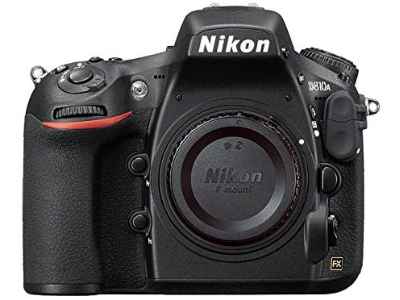
| Type | DSLR |
| Sensor | Full frame-CMOS |
| Megapixels | 36.3MP |
| Dynamic range | 14.8 Evs |
| Shutter speed | 1/8000 – 900 sec |
| Lens mount | Nikon F |
| Autofocus | 11 points AF |
| Screen Type | 3.2-inch fixed no-touchscreen |
| Viewfinder | pentaprism |
| Burst Speed | 5 fps FX, 7 fps DX |
| ISO range | ISO Auto, 200-12800 (expandable to 100-51200) |
| Video Resolution | Full HD 1080p at 24, 30 and 60 fps |
| Weight | 880 g /1.94 lb |
| Battery | about 1200 shots |
| User Level | Expert/Professional |
Designed exclusively for astrophotography, the D810A is Nikon’s first of its kind, and the best DSLR for astrophotography. Its IR filter is optimized for H-alpha red tones, resulting in four times greater sensitivity to the 656 nm wavelength than a standard DSLR. Capture the Celestial objects like emission nebulae in staggering detail with its 36.3-megapixel full-frame CMOS image sensor, which has no optical low-pass filter with even greater resolution. Now you can capture the jewels of the night sky you may not have thought possible before.
Based on the award-winning full-frame D810, the D810A is Nikon’s first DSLR dedicated to long-exposure deep-sky astrophotography. This astrophotography DSLR camera records the brilliant red tones of H-alpha emission nebulae with a level of detail and rich tonality, wide dynamic range, and sharpness almost unimaginable before. It reveals the faintest celestial objects with exposures up to 15 minutes long; and noise-free performance at ISO levels as high as 12,800 (expandable to 51,000). You can create star trail images that span the entire sky with unlimited continuous JPEG shooting. Whether you use it over a fixed tripod, equatorial mount, tethered to a laptop, or connected to a telescope, the Nikon astrophotography camera will take your passion for the cosmos and astrophotography to the next level.
Also read: Best Nikon Lenses
3. Sony A7S III
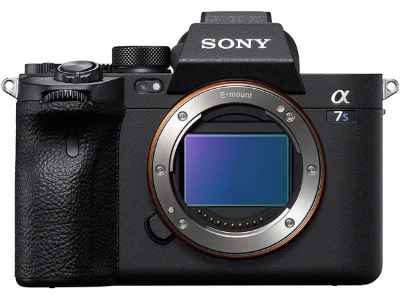
| Type | Mirrorless |
| Sensor | Full-frame CMOS |
| Megapixels | 12.1MP |
| Dynamic range | Max 14 stops (13.91 EVs) |
| Shutter speed | 1/8000 sec |
| Lens mount | Sony FE |
| Autofocus | 759 on-sensor phase-detect points, eye, and animal AF |
| Screen Type | 3-inch fully articulating touchscreen, 1,440,000 dots |
| Viewfinder | Electronic, 9.437m dots |
| Burst Speed | 10fps |
| ISO range | 100 – 51200(exp. 50, 64000 – 204800) |
| Video Resolution | 4K 240fps |
| Weight | 699g/1.54lb |
| Battery | 600 Stills |
| User Level | Professional |
Sony A7S III is another one from the list of Sony cameras that can bring the magical night sky view to life and can perform as an excellent astrophotography camera. With its high-tech features, it is going to make astrophotography easier for its users. Highly featured sensors of the camera can capture immense details and perform outstandingly in low light. Thus making it an ultimate option for astrophotography. The APS-C camera has a resolution of 12.1MP megapixels with an electronic viewfinder of resolution of 9.437m dots that delivers miracles of the night sky as real as through an eyepiece. In low light situations, the camera is capable of 15 stops of dynamic range with its maximum ISO ceiling of 409,600. It has a superlative image sensor with a better autofocus system, improving its performance.
Additionally, it has improved features against dust and splashes, with some extra sealing that protects the data ports and the battery compartment. The stabilization system of the camera compensates for shaking along 5.5 axes that smooth away jumps in handheld video footage. Stabilization will be also beneficial for a multi-shot mode to catch the night view. It can capture about 10 images in a row. It can capture UHD 4K video at up to 120p without pixel binning and shoot 4K at 60p uncropped, recording it internally, in 10-bit 4:2:2 and with no limitations on recording time. The camera comes with a fully articulated and bright touch screen. The remote control is possible from a PC through WLAN, with Bluetooth connectivity that allows transmission of the GPS data from a smartphone to the camera.
Also read: Best Sony Lenses
4. Nikon D5
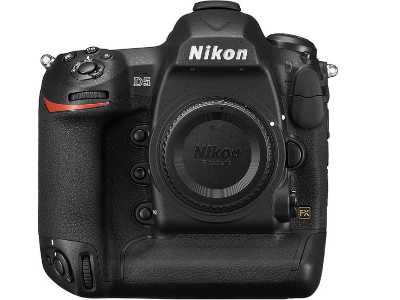
| Type | DSLR |
| Sensor | Full frame, CMOS Sensor |
| Megapixels | 20.8 MP |
| Dynamic range | Max 12.3 EVs |
| Shutter speed | 1/8000 – 30 sec |
| Lens mount | Nikon F mount |
| Autofocus | 153-point AF |
| Screen Type | 3.2-inch 2.36M-dot touchscreen |
| Viewfinder | Pentaprism |
| Burst Speed | 12fps |
| ISO range | 100 to 102,400, extensible up to 3,280,000. |
| Video Resolution | 3,840 × 2,160 MP |
| Weight | 1415 g /3.12 lb |
| Battery | 3,780 shots |
| User Level | Expert/Professionals |
Among the flagship cameras of Nikon, the D5 is the action-oriented camera and one of NASA’s favorites. It has a full-frame sensor with a 20.8 MP resolution, mostly favored by wildlife photographers. This best full-frame DSLR can be the ideal DSLR camera for astrophotography because of its features. It has a fast focusing system, with autofocus of 153 points and 99 cross-type. The continuous tracking of the camera is very accurate and proficiently keeps up with fast-moving subjects. It beautifully tackles different light situations, giving incredible image quality. It has an impressive native ISO range of 100-102400, on expanding covers ISO 50-3280000 range. Thus, in the dark, it performs much better than the human eye. The autofocus system of the camera can focus down to -4 EV in the dark. It uses an EXPEED 5 processor, which is remarkably fast with its operations. The continuous shooting speed is 12 fps.
Moreover, it has the capabilities of 4K UHD video recording. It can record 4K up to 30 fps for three minutes at a time. Other video features of D5 include Flat picture control, a movie shooting menu along smooth exposure compensation. Further, full HD video can be recorded with three options such as FX field-of-view, DX-based with 1.5x cropped, and 1920 x 1080 crop. A camera is considered efficient until or unless it quickly offloads its files. Therefore, D5 proves its efficiency through its built-in LAN capabilities. The 1000 Base T Ethernet port allows the camera to transfer Max 400Mbps files with remarkable speed. The camera comes in two versions, one with two CF-card slots and the other with two XQD slots. However, it does not have built-in Wi-Fi and built-in GPS. There is no built-in flash, so it is unable to trigger optical slaves. The body of D5 is built with magnesium alloy with protection from dust, moisture, and harsh weather. The battery life of this astrophotography camera allows about 3780 shots on a single charge.
5. Sony a7R III
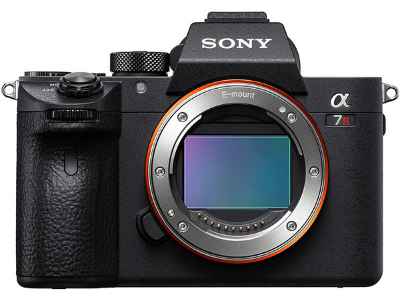
| Type | Mirrorless |
| Sensor | Full frame, BSI-CMOS |
| Megapixels | 24.2 |
| Dynamic range | 14.7 Evs |
| Shutter speed | 1/8000 – 30 sec |
| Lens mount | Sony E-mount |
| Autofocus | 399 AF points |
| Screen Type | 2.95-inch fully tilt-type touchscreen |
| Viewfinder | EVF,3,686,400-dots |
| Burst Speed | 10 fps |
| ISO range | 100-32,000 (expandable to 50-102,400) |
| Video Resolution | 4K/30p 1080/120p |
| Weight | 657 g/1.45 lb |
| Battery | about 530 shots |
| User Level | Expert/ Professionals |
Sony a7R III is another great option for an astrophotography camera that will never disappoint. It is a mirrorless camera with a significant feature of focus speed. It has an impressive capability to capture 42.2 megapixels, which gives ultra-high resolution photos. With an improved battery capacity, a7R III is primed for capturing stunning pictures of stars, the Milky Way, and planets. However, it must pair up with a CMOS sensor and an efficient image processor for better astrophotography.
Apart from this, it is very convenient for long-exposure shots. It has a built-in digital viewfinder and an efficient stabilizer, which makes it compatible with any optics. It gains ISO 204800 by improving noise performance and low-light capabilities. The amplification feature of the camera allows live-view framing of scenes in the night. The USB-powered operation of the camera is another exciting thing for time-lapse shooting. It is one of the best cameras for astrophotography.
6. Nikon D500
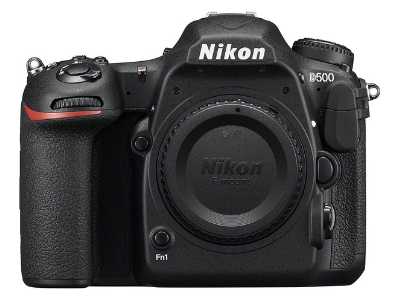
| Type | DSLR |
| Sensor | APS-C CMOS |
| Megapixels | 20.9 MP |
| Dynamic range | 14 EVs |
| Shutter speed | 1/8000 sec |
| Lens mount | Pentax KAF2 |
| Autofocus | 11 points AF |
| Screen Type | 3.2-inch tilting touchscreen |
| Viewfinder | Pentaprism |
| Burst Speed | 10.2 fps |
| ISO range | ISO 100 – 51200(Expandable: Low 50, High 1,640,000) |
| Video Resolution | 4K at 24p, 30p |
| Weight | 860 g /1.90 lb |
| Battery | 1,240 shots (CIPA) |
| User Level | Enthusiast/Pro-Level |
Nikon D500 is preferable for shooting portraits and can also serve as an excellent astrophotography camera. It has 20. MP CMOS sensor can shoot 10 frames per second and goes up to 200 frames. Also, it is possible to access those images within a second. Perform well up to ISO 51200 and can pull up to ISO 164000.
Furthermore, it has built-in Wi-Fi with Bluetooth and NFC facility. It has a tilt sensor screen with responsive and bright sharp features that can be rotated in any position vertically. There are positive reviews by many professionals on its stellar performance. No pixelation, noise, or color shift is noticed for low-light photography. It has two AF modes with a 153-point AF system. Similarly, its accurate autofocus is a better choice for different situations, whether it is astrophotography or wildlife photography. It is another best DSLR camera for astrophotography with an optical viewfinder, and it has a 4K video resolution.
7. Canon EOS 7D Mark II
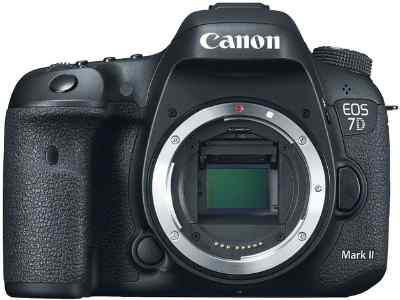
| Type | DSLR |
| Sensor | APS-C CMOS |
| Megapixels | 20.2 MP |
| Dynamic range | 11.8 Evs |
| Shutter speed | 1/8000 s |
| Lens mount | Canon EF |
| Autofocus | 65-point AF |
| Screen Type | 3.0-inch no-touch screen |
| Viewfinder | Electronic viewfinder with an image sensor |
| Burst Speed | 10fps |
| ISO range | ISO 16000 (expandable to H1: 25600, H2: 51200) |
| Video Resolution | 1080p at 60, 50, 30, 25 and 23.97 or true 24fps |
| Weight | 910g /2.0 lb |
| Battery | about 670 shots |
| User Level | Intermediate/Professional |
Canon EOS 7D Mark II is another best Canon camera and a well-performer gear in low light situations. It is demonstrated for long exposures and is a game-changing device for astrophotography. It has an improved autofocus system, available for a lower price as compared to other high-priced astrophotography cameras with similar features. However, it has tiny pixels to be considered for DSLR. Thus it needs very sharp lenses to capture all the details of an image. It has a built-in intervalometer that makes it cool for getting time-lapse photography. This APS-C camera has a resolution of 20.2 megapixels and a dual-pixel CMOS sensor. With the capability of giving better quality images, this Canon astrophotography camera can pull ISO from 100 to ISO 16000 on a standard setting. However, it can expand ISO up to 512000.
In warm conditions, long exposure noise is not possible for more than 60 sec. It is quite annoying to shoot night-views in summer because of the warm, noisy sensor. However, improvements have been noticed in 7D II which can take noise-free long exposures even at 60 to 70 degrees. Furthermore, it is lighter in weight as compared to the previous Canon models regardless of the magnesium alloy body. However, the LCD screen of the camera is not articulated.
8. Nikon D5600
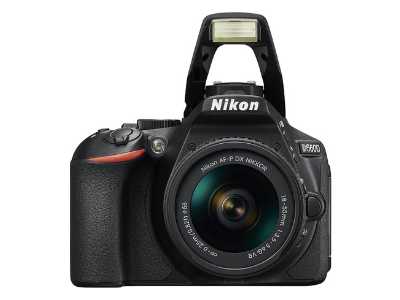
| Type | Compact SLR |
| Sensor | DX-format (APS-C) CMOS |
| Megapixels | 24 MP |
| Dynamic range | 11.1 Evs |
| Shutter speed | 1/4000 – 30 sec |
| Lens mount | Nikon F |
| Autofocus | 39-point Multi-CAM 4800DX |
| Screen Type | 3.2-inch fully articulated touchscreen |
| Viewfinder | pentamirror |
| Burst Speed | 7fps |
| ISO range | 100 – 25,600(exp.100 – 25,600) |
| Video Resolution | 1920 x 1080 at 60,50,30,25,24 fps |
| Weight | 465 g /1.03 lb |
| Battery | 970 shots per charge |
| User Level | Upper entry-level |
APS-C CMOS sensor-powered camera, yet at entry-level is an ideal DSLR for astrophotography, for those with an affordable budget option. With a resolution of 24.2 MP, it can pull ISO sensitivity from ISO 100 to ISO 25600. With a wide dynamic range, it is paired with the Nikon EXPEED 4 image-processing engine. It captures at the lowest ISO level at low light, but can also give decent results above ISO 1600.
Also, its auto-focusing feature makes it ideal for shooting at low LV even lower to negative 0.9 EV. Therefore, it is a better option for astrophotography at entry level with a low price offering. You can enjoy better results for an affordable price.
9. Pentax K-70
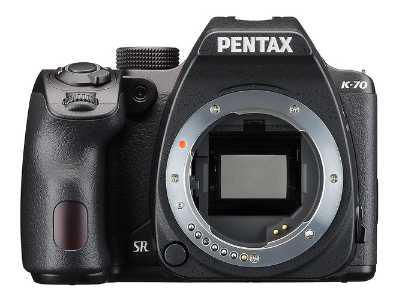
| Type | DSLR |
| Sensor | APS-C CMOS |
| Megapixels | 20.2 MP |
| Dynamic range | 11,5 Evs |
| Shutter speed | 1/6,000 second |
| Lens mount | Pentax KAF2 |
| Autofocus | 11 points AF |
| Screen Type | 3.0 inch fully articulated touchscreen |
| Viewfinder | pentaprism |
| Burst Speed | 6.0 fps |
| ISO range | Auto, 100-102400 |
| Video Resolution | 1920 x 1080 pixels up to 30 frames per second |
| Weight | 688 g /1.52 lb |
| Battery | about 410 shots |
| User Level | Entry-level/Enthusiast |
Another best camera for astrophotography on the list of astrophotography cameras is the Pentax K-70. It is capable of working in all weather, and it can be appropriate for astronomical shots at a temperature of -10 degrees Celsius. It has a weather-sealed body that makes it demanding in rough weather conditions. It has an adjustable brightness feature in its LCD monitor with an effective resolution of 24.24 Megapixels. The night vision red-light function in the display is a plus point for astrophotographers.
Another cool feature of the Pentax K-70 is its shake reduction functionality that allows capturing a clear picture even in sudden movements. Sometimes, shaky hands spoil the capturing movements, in that case, Pentax K-70 assures you perfect images. However, it lacks a mechanical stabilization feature for its user. Apart from that, Microphone connectivity is another additional feature that helps photographers to adjust noise concerns.
Some advanced features as 4K videos or high frame shots, and audio level control are missing from the K-70. No in-camera Wi-Fi features added to K-70 and auto-focus is not up to the mark. Still, it is the best camera for night sky photography for Astro-professional or amateur photographers.
10. Nikon D3400
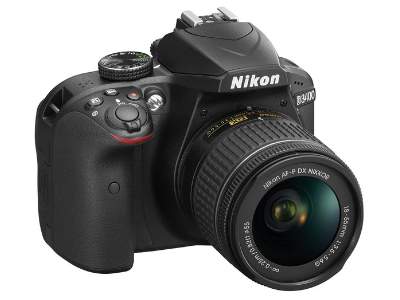
| Type | DSLR |
| Sensor | APS-C CMOS |
| Mega Pixels | 20.9 MP |
| Dynamic range | 11.5Evs |
| Shutter speed | 1/4000s |
| Lens mount | Pentax KAF2 |
| Autofocus | 11 points AF |
| Screen Type | Fixed Type 3inch LCD screen |
| Viewfinder | pentamirror |
| Burst Speed | 5 fps |
| ISO range | Auto, 100-25600 |
| Video Resolution | 1080p at 24p, 25, 30, 50, 60, 720p |
| Weight | 445 g /0.98 lb |
| Battery | 1200 shots |
| User Level | Beginner/ Entry-level |
Nikon D3400 is the best camera for beginners who are interested in astrophotography or simple night-view photography. However, it needs to be coupled with an appropriate lens for getting some outstanding results. It has a resolution of 24.2 MP and EXPEED 4 Images, whereas the auto ISO Range is 100-25600.
Available at an affordable price, and comes with a snap bridge connectivity. The autofocus system of the camera is also user-friendly. This best budget camera is the right choice for dim light photos. And the best part is that its battery can also run for hours. You can enjoy night sky photography with this cheap astrophotography camera.
Buyers Guide: Things to look for In a camera for Astrophotography
Do it with a dedicated astrophotography camera or a consumer digital camera, astrophotography is going to test your photography skills. And that is why it is one of the most rewarding genres of photography. There are certain areas that you need to understand and implement correctly to get excellent results from your equipment. Let us explain them to you.
Sensor
There are two things to consider about sensors when choosing your astrophotography camera.
MegaPixels: Generally higher megapixels are preferred on any sensor. But ironically the lower the megapixel on a sensor the better it will be for low light performance and noise tolerance. The lower megapixels mean larger sizes of pixels (telephotos) to cover the same area of the full-frame sensor. And that results in better low-light performance and noise tolerance. Higher megapixels mean to fix a higher number of pixels on the same size area of the sensor resulting in smaller pixels, which are preferred when you want to render finer details in the captured scene. So, if you are looking to print larger posters or shoot for a magazine then it is preferred to go with higher megapixels but if you are shooting for online content and social media then lower megapixels will give you finer and detailed images and video.
Sensor type: Similarly, the higher the crop factor the narrower the field of view and the higher the magnification. So bigger crop factor means a narrow field of view and higher magnification.
So, in simple words, if you are doing landscape astrophotography and capturing the moon, Milky Way, auroras, and other large-size celestial bodies that require large views like the Andromeda galaxy, large clusters like Pleiades and Perseus then full-frame cameras are the preferred choice. But if you are more interested in smaller celestial objects like shooting distant galaxies, globular clusters, and planetary nebulae and want to use your camera with an astrophotography telescope and long zoom lenses or on a tracker then the APS-C sensor will give you better results and allow you to zoom in on those objects for better magnification.
Dynamic range
In photography, the dynamic range is the difference between the lighter and darker tones that the camera can pick. Low dynamic range will often result in muddy photographs with unwanted star trails while astrophotography cameras with good dynamic range will give you fine color details and will offer better saturation which is helpful in post-capture photo editing.
Shutter Speed
The shutter controls the amount of light that gets into the camera. A fast shutter speed is essential for capturing fast-moving objects as well as shooting in bright light. But with astrophotography, you need a slow shutter speed in order to let more light incoming from dim and slow-moving celestial bodies millions of miles away. These are called long-exposure shots. And for long exposure shots, you need a camera with a wide shutter speed range.
ISO
ISO means how sensitive the camera’s sensor is to light. For night photography you will need a higher ISO. Generally, a higher ISO is supposed to increase the sensitivity of your camera to extremely faint celestial objects. Or to be more technical, higher ISO simply amplifies the sensor’s signal and thus increases gains to give you better photos in a low light situation. But you’ll have to work it out because you have to adjust it depending on the apparent magnitude of those objects and the luminosity of your night skies.
People Also Ask
What makes a camera suitable for astrophotography?
Astrophotography requires specific features in a camera to capture celestial bodies effectively. There are certain features such as a sensor with high sensitivity to low light conditions, a wide dynamic range, and a long exposure ability for taking images of faint objects. In addition, an astrophotography camera with manual control of settings including shutter speed, ISO, and focus for precise adjustments in astrophotography.
Which camera can I use, a mirrorless or DSLR, for astrophotography?
Both types of cameras are good for astrophotography. However, it depends on the personal preferences of a user. Mirrorless astrophotography cameras are great because of their compact size, electronic viewfinder, and advanced autofocus system. Whereas, DSLR astrophotography cameras allow us to use a wide range of lens options along with long battery life.
What makes the Canon EOS Ra a specialized astrophotography camera?
The Canon EOS Ra features a specialized full-frame sensor designed for astrophotography, allowing for enhanced transmission sensitivity of deep red IR rays. It also offers 30x magnification in both the viewfinder and Live View shooting, enabling more accurate focus.
Should I consider Sensor size when buying the best astrophotography camera?
Sensor size is very important for astrophotography. It is because sensor size finds out the field of view and amount of light gathered by a camera. This is the reason that full-frame sensors are preferred for astrophotography. The larger the sensor size is, the better it gathers light. However, APS-C sensors can perform well when paired with the right lens or a telescope camera.
How important is the camera’s ISO range for astrophotography?
The ISO range of a camera is significant in astrophotography as it determines its sensitivity to light. A wider ISO range allows you to capture images in low-light conditions without excessive noise. Look for astrophotography cameras with expandable ISO options, as this can be beneficial for capturing faint objects in the night sky. The best cameras for night photography can achieve this.
Can I use regular lenses for astrophotography, or do I need specialized lenses?
There are specialized lenses for astrophotography that can improve image quality; however, people on low budgets can still use regular lenses effectively. Wide angle lenses with low aperture, such as f/2.8 or lower, can be used for photographing the night sky and producing stunning astrophotography images. If you plan to capture specific celestial objects with details, invest in a specialized astrophotography lens or get a telescope.
You may like to read: Types Of Camera Lenses
Final Thoughts
In the captivating realm of astrophotography, where the wonders of the cosmos await to be captured, choosing the perfect astrophotography camera becomes paramount. As we enter 2024, we present to you a selection of the finest astrophotography cameras that will ignite your passion for celestial photography. The Canon EOS Ra takes the lead with its specialized full-frame sensor, designed specifically for astrophotography, allowing for enhanced transmission sensitivity of deep red IR rays. Meanwhile, the Nikon D810A boasts a remarkable 36.3-megapixel sensor optimized for capturing the breathtaking details of emission nebulae. Sony A7S III emerges as a powerful contender with its exceptional low-light capabilities and a sensor that delivers astonishing results even in the darkest of nights. The Nikon D5, favored by NASA, showcases its prowess with a fast autofocus system and an impressive ISO range, making it ideal for capturing celestial marvels. Lastly, the Sony a7R III captivates with its high resolution and wide dynamic range, offering a splendid experience in astrophotography. Embark on an extraordinary journey with these remarkable cameras, and unlock the secrets of the cosmos with each click of the shutter.
Related Articles:

